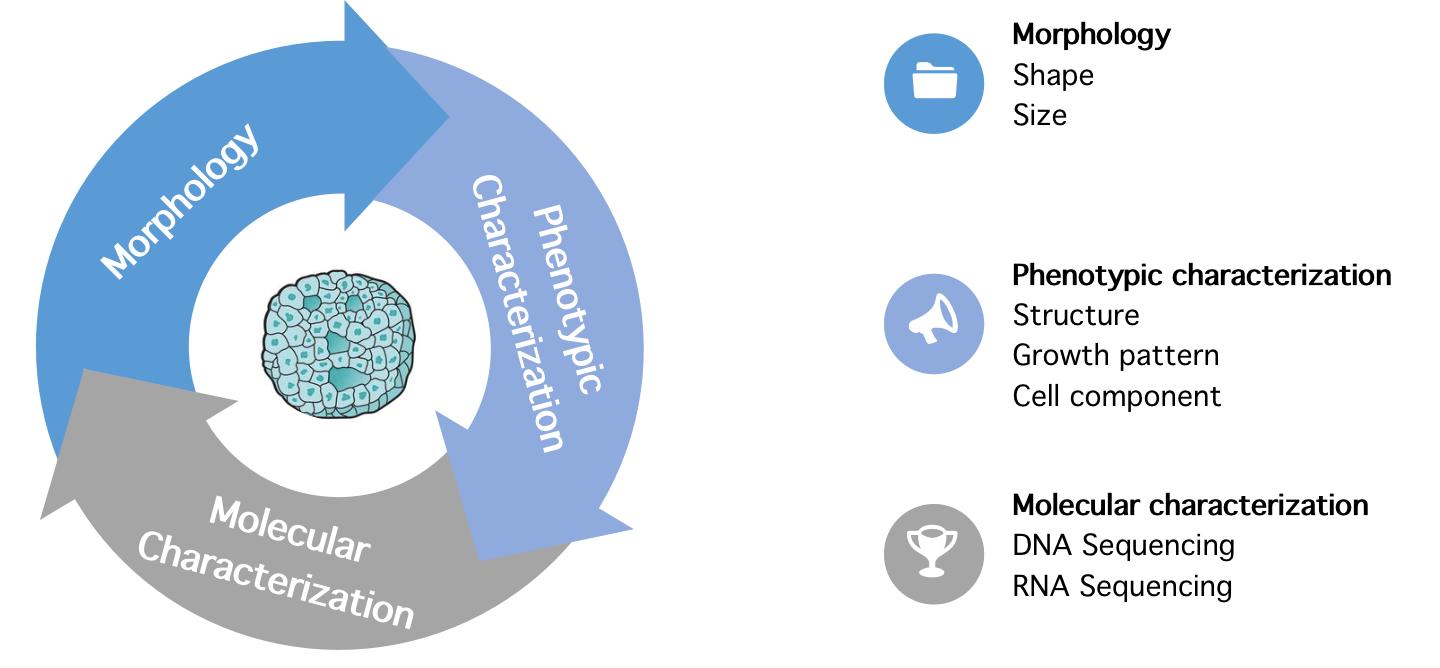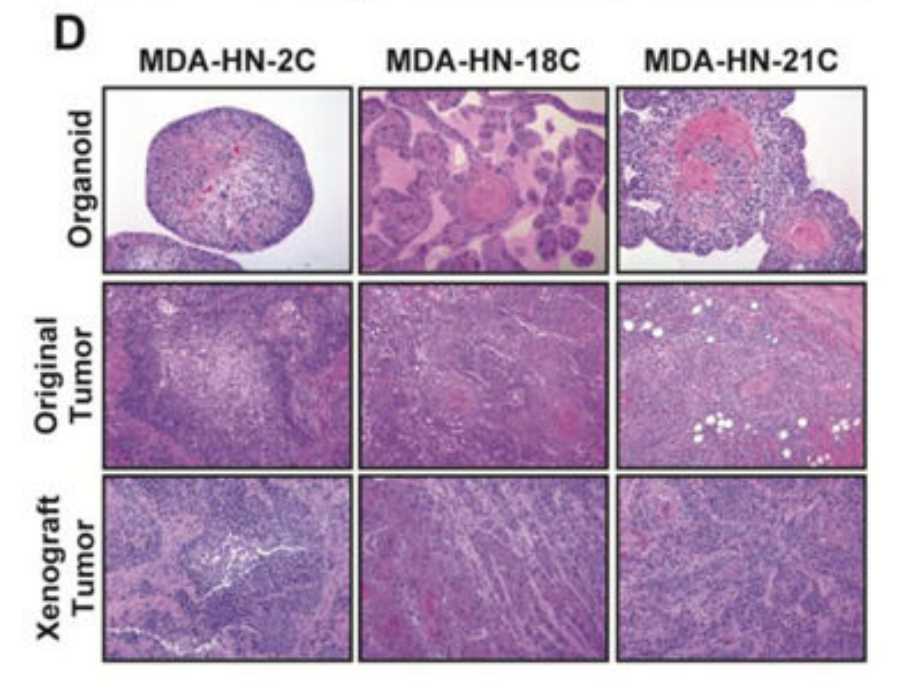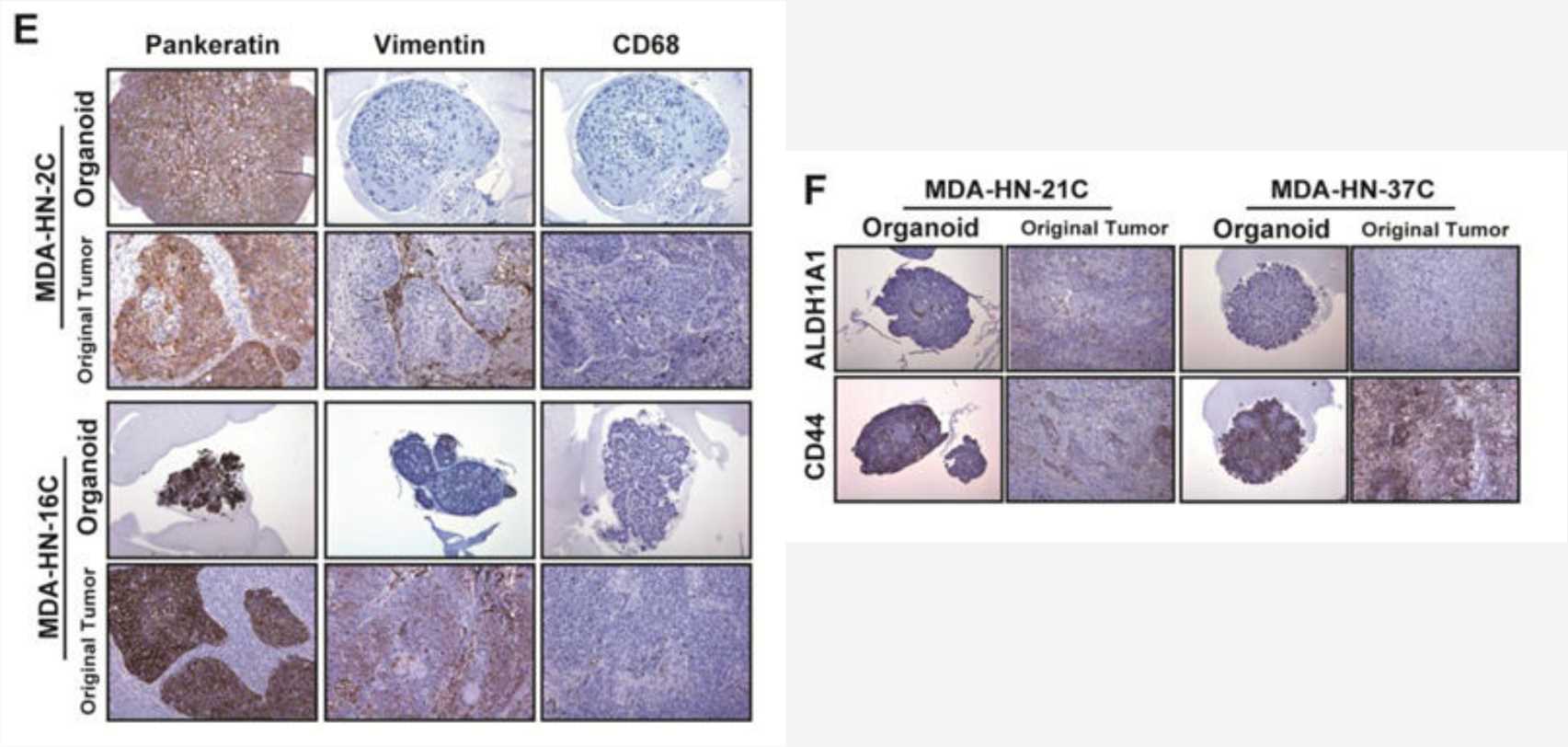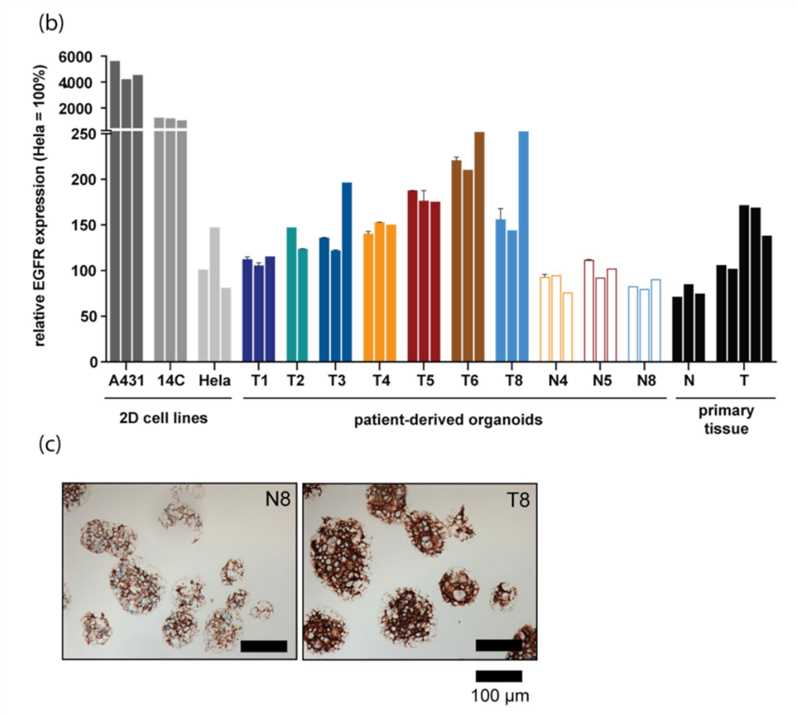All products and services are For Research Use Only and CANNOT be used in the treatment or diagnosis of disease.
Head and neck cancer is a collective name of cancers that take place in the mucosal epithelium of the oral cavity, nasopharynx, hypopharynx, oropharynx, and larynx. Head and neck squamous cell carcinoma (HNSCC) is a common type of malignant that shows poor outcomes to classical treatment. Cancer organoids, especially patient-derived organoids (PDO), recapitulate the key features of human tumor tissue and are reliable models for evaluating tumor responses in patients. Creative Biolabs offers well-characterized head and neck organoid lines from multiple anatomical locations and cancer subtypes with defined antigen protein expression for tumor immunotherapy efficacy tests.
|
| Diverse Head and Neck Cancer Organoids |
|
We test the relevance of patient-derived organoids compared to original tumor tissue from cellular and molecular aspects.
 Fig.1 Established cancer organoids profiling. (Creative Biolabs)
Fig.1 Established cancer organoids profiling. (Creative Biolabs)
Cell Markers for Head and Neck Cancer Organoids Identification
| Cell | Biomarker | Cell | Biomarker | Cell | Biomarker |
| Epithelial cell | AE1AE3, Pankeratin | Differentiated squamous cell | Cytokeratin 13 | Basal cell | p63 |
| Cancer stem cell | ALDH1A1 and CD44 | Mesenchymal cell | Vimentin | Macrophage and Langerhans cells | CD68 |
With years of deep study on cell therapy, Creative Biolabs masters the prevailing immune cell engineering technologies and offers CAR cells related products for researchers to test engineered cell functions in vitro, such as cancer organoids mediated cytotoxicity tests.
| Target antigen | Target description | CAR-T Products |
| ErbB | Pan-ErbB represents the ErbB family that contains four epidermal growth factor receptors named ErbB-1, ErbB-2 (HER2/neu), ErbB-3, and ErbB-4. Pan-ErbB has become an attractive biomarker for targeted therapies. | Anti-ErbB CAR-T |
| HER2 | HER2 also named as ErbB2, HER2, or c-erbB2. High levels of HER2 expression in squamous cell carcinoma are related to poor survival and an increased rate of recurrence. | Anti-HER2 CAR-T |
| EGFR | Human epidermal growth factor receptor (EGFR), also called ErbB-1 or HER1, is an oncogenic gene with high expression in lung cancer and head and neck tumors, serving as a target for CAR-T therapy. | Anti-EGFR CAR-T |
| Head and Neck Organoids Show Similar Phenotypical Characteristics as Parent Tumor |
 Fig.2 Organoids are tested for histological structure. (Tanaka, et al., 2018) |
 Fig.3 Organoids and original tumors are tested for specific cell populations using IHC staining. (Tanaka, et al., 2018) |
| HNSCC Organoid Lines Are Established to Test EGFR Targeted Therapies |
Highlights:
|
 Fig.4 Organoids recapitulate EGFR expression in parental tumor specimen. (Driehuis, et al., 2019) |
 Fig.5 The response of Cancer organoids to antibody-based PDT therapy is detected by cell viability alteration. (Driehuis, et al., 2019) |
Creative Biolabs offers faster development and enhanced cultures of organoids for CAR-T anti-tumor activity evaluation. please contact us and get more detailed information.
References
For any technical issues or product/service related questions, please leave your information below. Our team will contact you soon.
 NEWSLETTER
NEWSLETTER
The latest newsletter to introduce the latest breaking information, our site updates, field and other scientific news, important events, and insights from industry leaders
LEARN MORE NEWSLETTER NEW SOLUTION
NEW SOLUTION
CellRapeutics™ In Vivo Cell Engineering: One-stop in vivo T/B/NK cell and macrophage engineering services covering vectors construction to function verification.
LEARN MORE SOLUTION NOVEL TECHNOLOGY
NOVEL TECHNOLOGY
Silence™ CAR-T Cell: A novel platform to enhance CAR-T cell immunotherapy by combining RNAi technology to suppress genes that may impede CAR functionality.
LEARN MORE NOVEL TECHNOLOGY NEW SOLUTION
NEW SOLUTION
Canine CAR-T Therapy Development: From early target discovery, CAR design and construction, cell culture, and transfection, to in vitro and in vivo function validation.
LEARN MORE SOLUTION